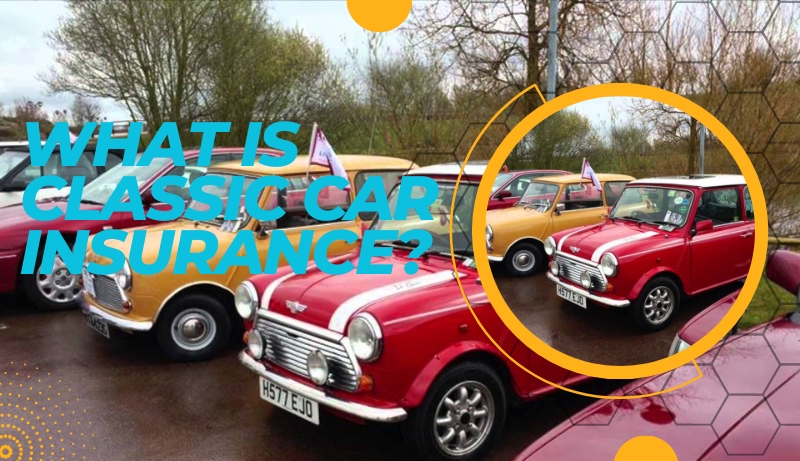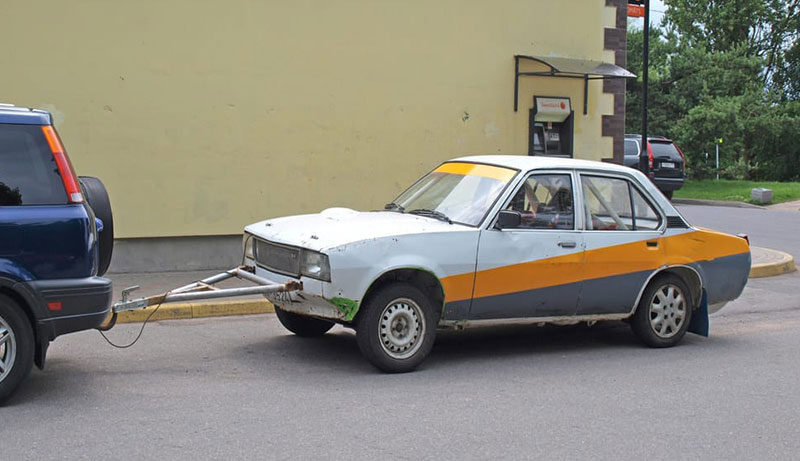A typical auto insurance company might not be able to provide the specialised coverage options and professional care that historic vehicle owners want.
The agreed value coverage, which implies that you and your insurer agree on the worth of your automobile based on an evaluation, is the most significant component of a vintage car insurance policy. Many insurers for historic cars additionally provide extra coverage for things like presenting your car at car shows and having experience fixing exotic cars.
However, using classic car insurance may have limitations, such as mileage restrictions and the fact that only some vehicles are eligible for coverage.
What is classic car insurance?

The most significant service and feature that sets apart classic automobile insurance from typical insurance coverage is agreed-value coverage.
In agreed value insurance, the worth of the automobile you own is agreed upon by you and your insurer, and that amount is the amount it is covered for. The amount might range from $10,000 to $100,000 or more, depending on how much an appraiser values your historic automobile.
In contrast, regular automobiles are insured differently. Your insurer will assess the worth of a car you own based on comparable models and the cost to repair it. A vintage automobile is insured in this fashion because its value is determined by what potential purchasers are prepared to pay, as opposed to how a conventional motor vehicle is covered.
Additionally, unlike traditional auto insurance, an agreed-value policy’s maximum payment won’t diminish with time. A 2010 Toyota Corolla is worth less today than it did in 2015, thus the maximum payment you may get may also vary. This is because most automobiles decline in value.
On the other hand, throughout the same time span, the value of a vintage automobile may remain the same or even rise: Five years ago and today, a 1970 Dodge Challenger in good condition may have been worth $30,000 each. The amount of coverage on your insurance must be manually changed to reflect the changing value of your vehicle.
Additional advantages of antique automobile insurance
The fact that these businesses specialise in working with a rare, collector or antique automobiles is the second key advantage of classic car insurance. When you have classic vehicle insurance, the agents, adjusters, and other employees you deal with will be more aware of the requirements of a classic car owner and conversant with the ins and outs of a unique automobile.
Additional specialised coverages consist of:
The increased cost of replacement: This coverage will cover the difference if the value of your vehicle rises over the pre-agreed amount.
Roadside assistance: Including flatbed towing solely to avoid damage while transferring the vehicle to a repair facility or back home.
Medical insurance coverage for auto shows: In the event that someone gets hurt while visiting a display or event that features your automobile.
No attendance is necessary: covers your automobile when it is being shown, such as at a car show, while you are gone from it.
Coverage for spare parts: protects against damage or theft of spare components associated with a covered occurrence, such as tires, valves, or other equipment.
Option for cash settlement: If your automobile is damaged or stolen, you have the option of accepting a cash settlement without having to repair or replace it.
The most popular types of auto insurance, including as liability, personal injury protection, and uninsured motorist coverage, as well as comprehensive and collision coverage, are also offered by classic vehicle insurance firms.
Drawbacks of a classic car insurance policy
Classic vehicle insurance has significant drawbacks in comparison to purchasing coverage from a major insurance provider because it is intended for rare or expensive cars. However, not all vintage vehicle insurers have similar limitations, so be careful to compare their services to others to discover the best option for you.
Mileage restrictions: To qualify for coverage, many vintage car insurers only let you drive your vehicle a specific number of miles every month.
Fewer discounts: Since many of the firms that provide insurance for antique automobiles are smaller, more specialised businesses, you might not be eligible for discounts for things like bundling policies, having certain employment, or using telematics devices.
Fewer alternatives for driving-related coverage: Classic vehicle insurers might not provide some options for coverage that are available at a bigger insurer, including roadside assistance or extended medical payments coverage.
Eligibility for classic car insurance

Classic car insurance isn’t intended for everyday drivers or standard-issue automobiles like a current Toyota or Volkswagen. Typically, classic automobile insurance demand that the vehicle has some unique characteristics, such as advanced age, high value, or some bespoke work.
Generally speaking, your vehicle must fit into at least one of the following groups:
- 25 years or older
- present-day muscle vehicle
- Exotic
- modified automobile
In order for your car to be eligible, it is also probable that it will need to satisfy each of the following conditions:
- Excellent condition
- Parked in a completely covered and safe garage, carport, storage unit, or other authorised building
- Used not for everyday commute
- Not utilised in racing
- No more than 7,500 kilometres per year of driving (varies by insurer)
Driver qualification
Additionally, as the car’s owner, you often need to fulfil requirements. However, generally speaking, you must:
- 25 years of age or older
- Have at least five to ten years of driving experience and a clean driving record
- Have had no more than one accident or moving infraction for which you were at fault in the prior three years.
- own a second car that you routinely use to get to and from work, school, and other frequently visited places
- Agree not to race it or use a racecourse with your vintage vehicle.
Types of vintage automobiles
The advantages and disadvantages of classic automobile insurance for antique, exotic, custom, or historic vehicles are generally comparable, albeit the types of vehicles covered may differ by carrier.
Although most collector auto insurance plans are comparable, it’s crucial to comprehend how carriers define various collectable car models, including those they exclude from coverage. The most popular collector vehicle categories are listed below, however, definitions, years, and descriptions might vary from insurer to insurer and state to state. For the sake of convenience, we’ll typically use the terms “classic car insurance” and “collector car insurance” interchangeably.
Classic car insurance: This type of policy is generally defined as covering vehicles that are between 19 and 24 years old, have been restored, are in good mechanical condition, and are worth more than the typical value of vehicles of the same make and model year. However, some insurers will only classify a vehicle as “classic” if it is more than 10 years old. The Classic Car Club of America considers all automobiles produced between 1925 and 1948 to be classics.
Antique car insurance: Antique vehicles are those that are at least 25 years old, in good running order, or have been restored to their original state. While the Antique Automobile Club of America considers an automobile to be antique if it is at least 45 years old, several jurisdictions simply need a vehicle to be “antique” to be at least 20 years old.
Modified car insurance: Cars that have been considerably modified from their original state in terms of their engine, body, chassis, or interior are referred to as modified cars, and many insurers won’t offer collector coverage for these kinds of cars. (for example, an antique car in which much of the stock equipment has been replaced or that runs on nitro fuel).
Kit cars and replicas: Kit cars and replicas are defined as assembled recreations of any motor vehicle at least 25 years old or representative autos at least 24 years old with distinct produced components.
These four basic classifications include additional subcategories, such as modified street rods and hot rods produced prior to 1949.
Other: Historically significant vehicles built between 1919 and 1930, perhaps modified:
- Older automobiles built before 1919
- Rare race cars, historic military vehicles, vintage tractors, classic motorbikes, and contemporary limited-edition models
Insurance for vintage vehicles
Speciality carriers (many of which underwrite for the aforementioned companies), like Hagerty, J.C. Taylor, Condon Skelly, Grundy, and American National, as well as well-known insurers like State Farm, Progressive, Farmers, Safeco, Geico, and Esurance, offer coverage for antique cars. Your current auto insurance company is an excellent location to start your search for the best service provider since they could be able to provide you with a discount for insuring several vehicles.



